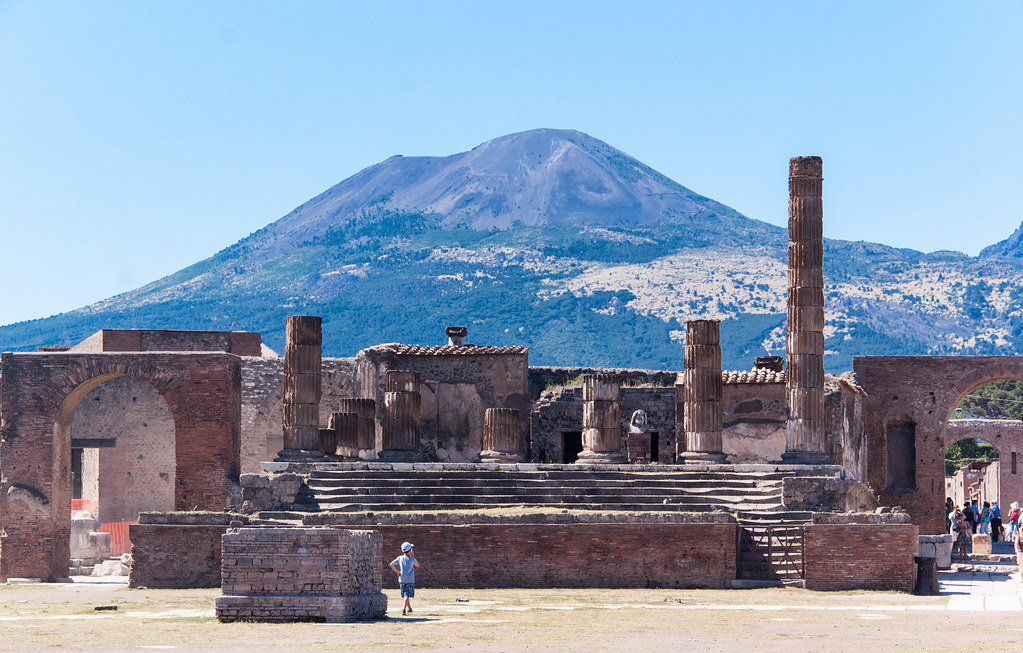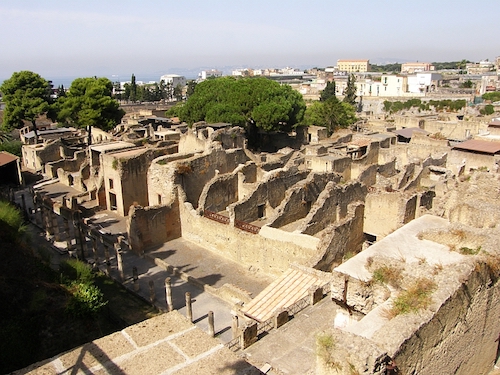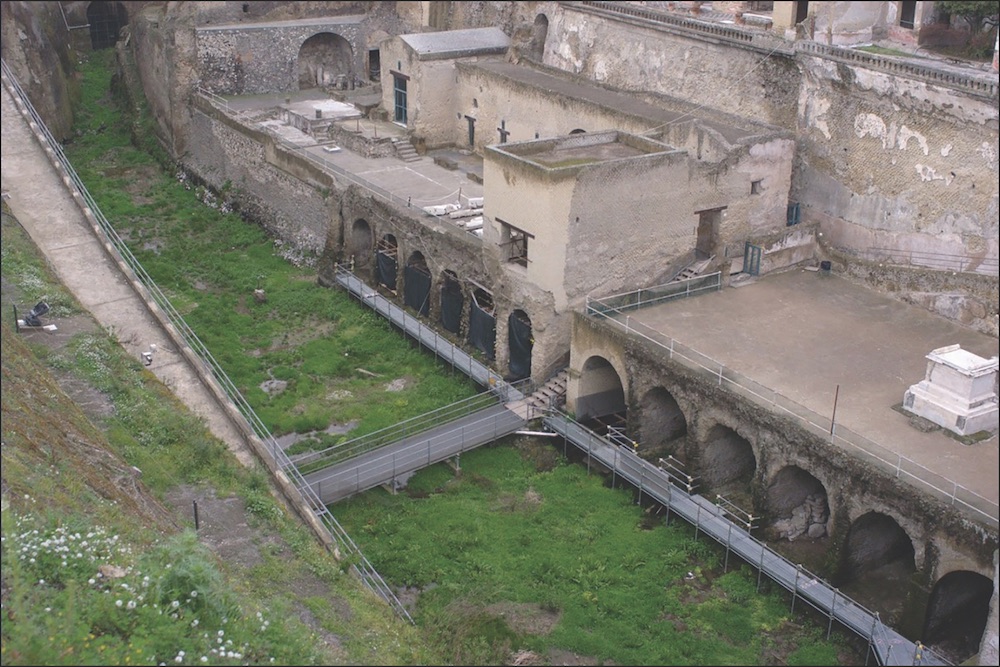What Really Happened at Herculaneum?

When Mount Vesuvius, on the west coast of Italy, first began its volcanic rumblings in A.D. 79, ash and white pumice deluged the surrounding region, including the famous city of Pompeii. Several hours later, the volcano belched up another phase of its eruption: a series of steaming toxic clouds of gas and rock called pyroclastic surges that heaved down the mountainsides, engulfing Pompeii and the nearby seaside town of Herculaneum.
Most residents of Herculaneum had time to flee—but not all. Some 340 people perished in the town’s beach-side boathouses and on the beach itself.
How these unlucky souls died has been a mystery. The dominant theory, first proposed in 2001, suggests these people succumbed instantly to heat shock and that the surge was so intense their blood boiled and flesh vaporized.
But not everyone agrees. “The reality is that soft tissue does not instantly vaporize at any temperature,” says Tim Thompson, a biological anthropologist at Teesside University in the U.K. “I think there’s a general consensus among those who work on bone and remains that vaporization just doesn’t happen.”
In a new study, published this week in the journal Antiquity, Thompson and his colleagues offer a new analysis and theory as to how these people died—one that may change how we picture this iconic episode. The techniques they used are part of an emerging set of tools that allow anthropologists to investigate human remains exposed to high heat—as in cremation, for example—at an unprecedented level of detail.
In their new study, Thompson and his colleagues looked at two main features of the bone samples: the presence of a protein called collagen and the crystal structure within bone. Collagen, the main protein in connective tissue, normally makes up about 20 percent of a bone’s weight but disappears when bones are heated. Yet the researchers found a good deal of it in most of the samples.
Meanwhile, they found that the organization of a calcium mineral called hydroxyapatite, which makes up the bulk of bone, didn’t change in the way one would expect had the bone been exposed to ultrahigh heat. Together, the findings hint that the victims’ soft tissue didn’t vanish in a flash but instead stayed intact for some time.
“It’s an elegant approach to the question,” says Holger Schutkowski, a bioarchaeologist at Bournemouth University and a bone expert who was not involved in the study. The findings show, he says, that “as the assault lasted, the soft tissue cover was sufficient to protect the skeleton from thermal alteration.”
Elżbieta Jaskulska, a biological anthropologist at the University of Warsaw in Poland who was also not involved in the study, expands on that image: “Just imagine how much muscle you have on your thigh,” she says. “It takes time to evaporate [the water from] all that muscle to get to the bone inside.”
Thompson and his colleagues further argue that the heat from the first and hottest pyroclastic surge would have taken time to penetrate the boathouse walls and then the soft tissues of people huddled together within it. They speculate that the people inside didn’t instantly vaporize but instead died more slowly, through asphyxiation as the dust and heat destroyed their airways.
However, the authors of the earlier vaporization theory are not swayed by Thompson’s new evidence. They stand by their earlier work, asserting that the posture of the bodies, the presence of iron deposits on the bones, and other evidence supports their theory.
This week, they published a letter in the New England Journal of Medicine that describes what they believe is brain tissue from a male skeleton found in Herculaneum that vitrified—became glassy—upon exposure to high heat. “This confirms the people died very suddenly,” says Pier Paolo Petrone, a forensic anthropologist at the University of Naples Federico II and the lead author of that work.
Thompson agrees that the vitrified brain tissue is a fascinating find but says it’s a logical leap from there to vaporization. Perhaps, he argues, vitrification also occurs with prolonged exposure to lower heat.
What this debate lays bare is a long-standing challenge in studying burned bones. To overcome this obstacle, Thompson is one of a handful of researchers who has pioneered a toolbox of techniques for studying burned or heated bone.
Thompson calls it “the bioarchaeology of cremation,” and as this field has advanced in the past decade, researchers have begun to glean important clues about how ancient cultures lived and died. For example, two years ago, a group of anthropologists and geochemists applied these types of techniques to cremated
What this debate lays bare is the long-standing challenge of studying burned bones.
remains near Stonehenge to determine that builders of that structure were not local but likely migrated from Wales.
The techniques also allow researchers to piece together details about how funerary rituals vary over time and across sites, and the role they play in different cultures. The tools may also be put to use in forensic analysis—for example, in analyzing natural or human-made disasters such as fires and terrorist attacks.
“With the advancements in these methods, we can study [human remains] in a new way,” Thompson says, adding that it was especially gratifying to do so in the present work. “Everyone knows about Vesuvius; everyone knows about Pompeii and Herculaneum. … There’s something personally very exciting about being able to contribute to that body of knowledge.”
This article was republished at The Atlantic.


































